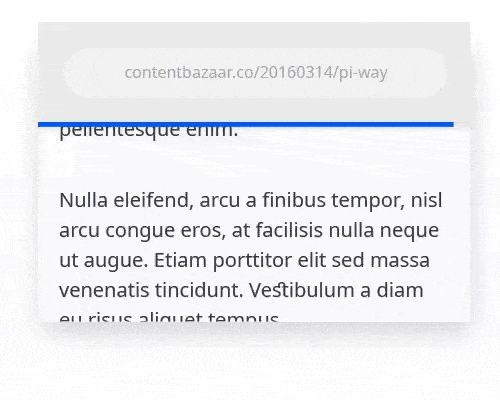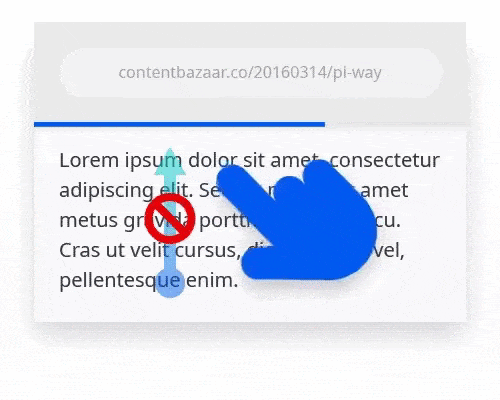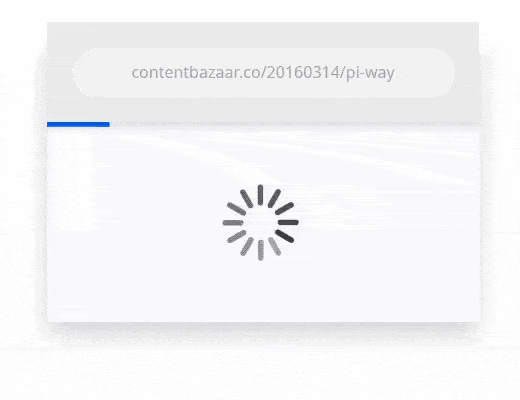Answering the question, “does my site provide a good user experience?” can be complex. Last year, Google announced Web Vitals, “an initiative to provide unified guidance for quality signals that are essential to delivering a great user experience on the web.”
Their goal is to make it easier for website owners to understand whether or not they’re providing their visitors with a good user experience, and as part of this initiative, Google introduced Core Web Vitals, metrics that will function as additional search ranking signals.
Core Web Vitals apply to all web pages and are currently focused on “three aspects of the user experience — loading, interactivity, and visual stability.”
We believe that this update will have a positive effect on user experience across the open web. Here’s what you need to know about the update and what Taboola is doing to support our publisher partners as this new update rolls out.
When is this update to rolling out?
Google will begin using page experience as part of its ranking systems starting in mid-June 2021. However, page experience won’t play its full role as part of those systems until the end of August. Sites generally should not anticipate extreme changes because Google is doing this as a gradual rollout and monitoring for any unexpected or unintended issues.
What does this mean for publishers?
Moving forward, Core Web Vitals will be a key way to measure page performance.
Publishers focused on user experience were always interested in improving their page performance. Now, page performance is also an SEO priority.
Page performance refers to the time required to load a web page on your browser. This could be affected by file size and processing resources both on mobile and desktop browsers.
What Impacts Page Performance?
Anything that you have on your page could impact page performance including text, videos, and images, but also tracking code, ad units — basically any code that renders on the browser on your page could impact page performance.
Taboola, similar to other third parties on publisher websites, impacts page performance. We recognize that this a crucial topic for our publisher partners and we have already started preparing for this update.
How is Taboola preparing for this update?
We’ve spent significant time and resources preparing for the Core Web Vitals update. Moving forward, we’re adopting Google’s benchmarks and page performance measurement tools. This allows us to better optimize the overall Taboola experience in line with Core Web Vitals guidelines.
We have already identified areas of improvement and our focus is to optimize page performance while having negligible impact on revenue/RPM.
What are the changes we are implementing?
There are three main metrics that make up Core Web Vitals: Cumulative Layout Shift (CLS), First Input Delay (FID) and Largest Contentful Paint (LCP). For each metric we are focusing on specific optimizations that should improve page performance.
Cumulative Layout Shift
Cumulative Layout Shift (CLS) measures visual stability and quantifies the amount of unexpected layout shifts of visible page content. This is meant to ensure that your visuals are stable, and don’t suddenly shift in front of the visitor’s eyes, like so:

To prepare, we’re removing unnecessary animations that can cause layout shifts. This will address any impact Taboola has on CLS, while preserving user experience.
First Input Delay
First Input Delay (FID) measures responsiveness and quantifies the experience when first interacting with a page. A negative experience might include not being able to immediately scroll once a page loads, like so:

This is where we see the biggest opportunity for improvement, and where we’re focusing most of our efforts.
To ensure better performance for FID, we are implementing lazy rendering, removing unused CSS & JS codes and using Brotli compression algorithms.
Largest Contentful Paint
Largest Contentful Paint (LCP) is used to measure perceived load speed and to mark the point in the page load timeline when the page’s main content has likely loaded. If it takes too long for content to load, that’s of course considered a bad user experience:

Taboola is not usually the main content in the page and shouldn’t impact LCP, but in cases where we are, we use a hybrid rendering approach to minimize burden on the browser.
In addition to the aforementioned optimizations, we are continuously reviewing our features to ensure they are optimized according to Core Web Vitals guidelines, even after the June update.
If you’re already a Taboola partner, and have more questions regarding Core Web Vitals and your Taboola integration, we recommend reaching out to your Account Manager or your Taboola Support team.